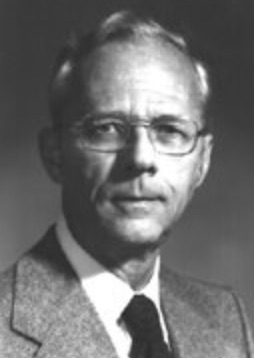
Jay Wright Forrester was born on July 14, 1918 on a farm near Anselmo, Nebraska. His home was outside a power grid, so during his high school years, Jay used old car parts to build a wind-driven 12-volt electrical power source to provide electricity for the farm. At age 21, he graduated from the University of Nebraska, Lincoln with a Bachelor of Science in Electrical Engineering.
In 1945, Jay received a Master of Science degree at MIT for his thesis ” Hydraulic Servomechanism Developments.” (Servomechanisms are electrical systems, like cruise control on a car, that use feedback to monitor and correct variables like speed or position.) Shortly after graduation, Jay became involved in the MIT Project Whirlwind, that in 1951 yielded a vacuum-tube computer that was one of the first high-speed digital computers . The Whirlwind I computer had what was called “magnetic-core memory”, that was the precursor of random access memory (RAM) allowing information to be stored in the computer by the computer operator. I
n 1956, Jay Forrester joined the MIT Sloan School of Management and in 1961 published his seminal book Industrial Dynamics. In this publication he laid out the principles of system dynamics–a methodology for monitoring the behavior of complex systems, such as the business cycles, in real time (i.e., as they occur) This was followed in 1968 with Principles of Systems and in 1969 by his book Urban Dynamics in which he attempted to extend these applications to the modeling of social problems such as housing, industry and employment. Then, in 1971, Forrester expanded his models to the management of global problems in his publication World Dynamics. The work influenced the work of the Club of Rome and many of Forrester’s ideas were included in their famous publication Limits to Growth.
Jay W. Forrester, served as Senior Lecturer at Sloan until his retirement in 1989. He passed away on November 16, 2016 at the 98 years of age. He is celebrated as founder of the field of system dynamics, and a pioneer of digital computing. His publications paved the way for modern systems thinking with applications that span various fields, including business management, environmental science, engineering, and public policy.
